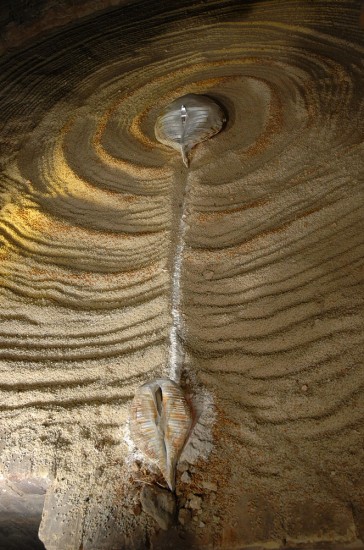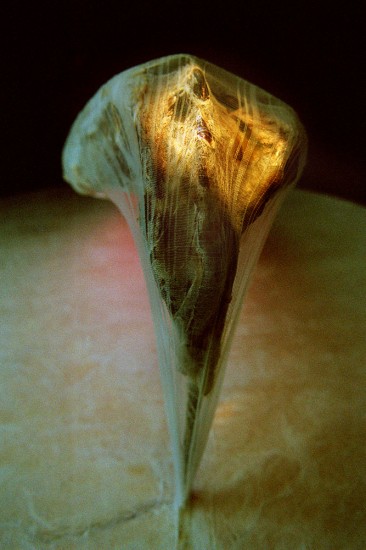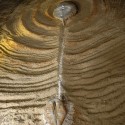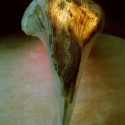Aforismi - Installazione
Critica
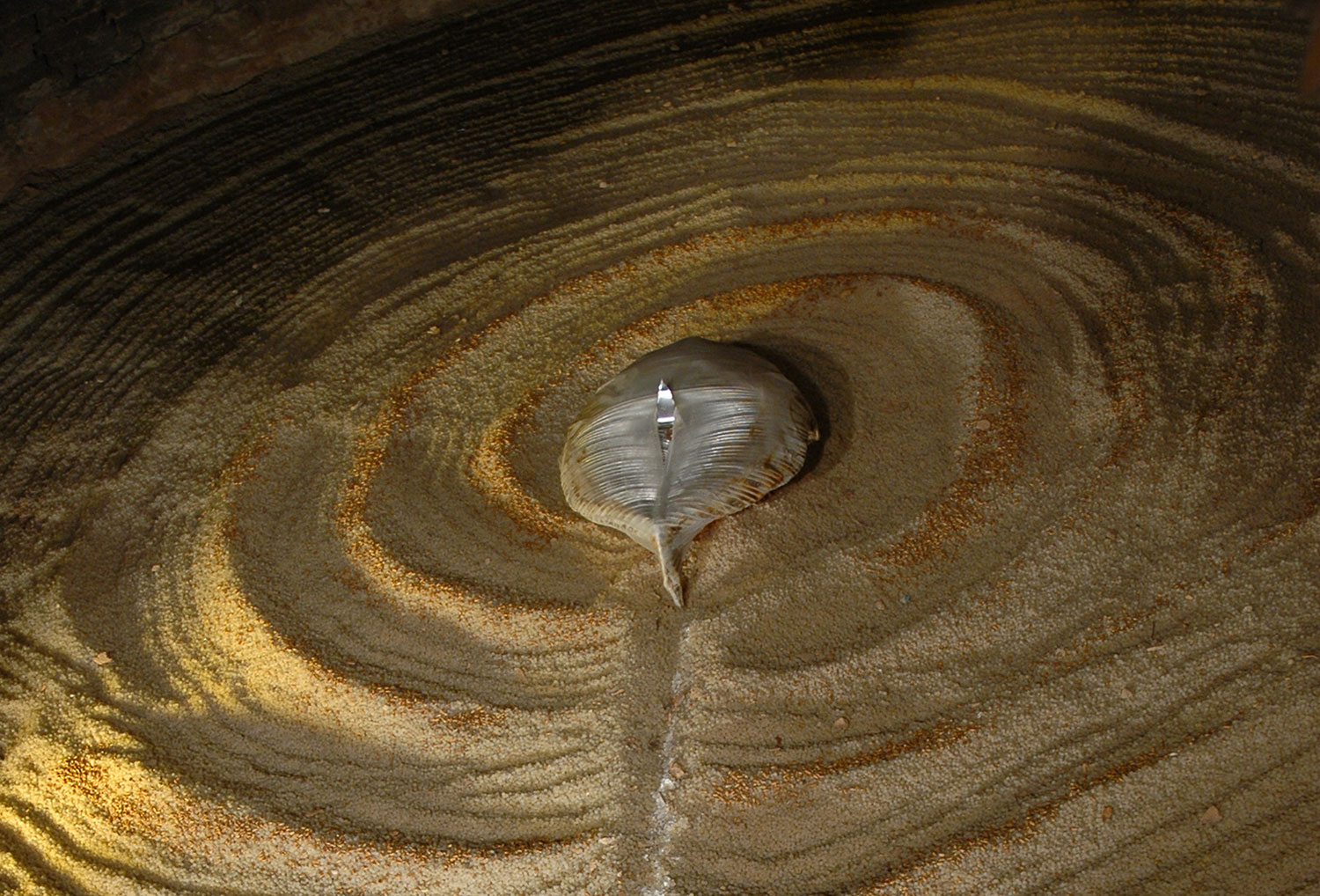
1. Laurence Durrel, in his famous novel Justine, defines Eros as “ a fluid fossil” giving an ossymor feature which is manifested in a continuous movement between forms and life. In Eros - according to the tradition which dates back to the platonic symposium and to the paper Eros, in the plotinian Enneadi - there is in fact a dual nature which by analogy, refers back to the knot that is tied and untied since the dawn of time. From this, from the knot but also from the spiral, the vortex and similar tangles, result, as it is well known, erotic symbols in a broad sense, where male and female principles meet and, at the same time, are separated.
Durrel has thus limited himself to following this tradition emphasizing however its existential and therefore tragic aspect as if, in the human being, the fluid presence of that fossil represents an unescapable destiny.
Thus, however famous and celebrated the books may be, the myths and symbols vitality can’t be fully contained in them. Such vitality is in fact an archetype shared by mankind – being that archetype a relevant part of human being. That’s way those who refer back to the above-mentioned “erotic” tradition are not supposed to quote the historical sources in an explicit way, it could be in fact that the artist, exactly referring to the source of the myth, includes in himself, in his soul and life its ideal value by rendering it in a particular representation. It is thus right to approach Giovanni Scagnoli’s works without looking for the quotation of famous ancestors but only finding a present-day “erotic” form of expression which also profits by memories derived from the history of art and maybe also from a less distant religious tradition than the ancient one.
2. If you observe the fossil plastics and the split matrixes produced by Scagnoli you feel the deep bond to the particular sacredness revisited through Eros christian and marian reassessment, the one which the Gothic middle ages expressed by calling the Blessed Virgin “vas spiritualis”,” vas honorabils”, “vas insigne devotionis” and by setting Her in relationship to the Light of which She is the medium towards the world and the creatures. Such is in my opinion the vase, the shell, the fossil which recur in Scagnoli’s works and their installation seems to refer to this sense which, for the most, profits by suspensions in the empty space, radiant illuminations, formal presences which are not fully formal as they send back to a peculiar place which is here and it is also beyond or elsewhere.
In this sense it is not strange to discover a tragic feeling of life in Scagnoli’s works, something quite human which brings back to a personal interpretation of the formal experiences had by the twentieth century great, unparalleled masters, like Arp and above all Fautrier and Fontana, masters who are in an anguished balance between the plastic art and the painted image.
There is however, in Scagnoli’s art, a more detailed and direct experience: the one of the patron of the Marches parish churches at the foot of the Sibillini Mountains with their dark chapels carved in the idea of the rock. A maternal and overwhelming rock like the one of the Sibilla Mount, with its fossil cave of the Nymphs by now lost. Maybe it is this the highest fascination for Scagnoli, a fluid and absorbed suggestion made up of lands which rise to the Mount Sibilla as if towards their celestial pivot.
So it not disagreeable to imagine him in meditation at the foot of that “Mons Veneris”, as he is looking upwards.
ROBERTO CRESTI
Durrel has thus limited himself to following this tradition emphasizing however its existential and therefore tragic aspect as if, in the human being, the fluid presence of that fossil represents an unescapable destiny.
Thus, however famous and celebrated the books may be, the myths and symbols vitality can’t be fully contained in them. Such vitality is in fact an archetype shared by mankind – being that archetype a relevant part of human being. That’s way those who refer back to the above-mentioned “erotic” tradition are not supposed to quote the historical sources in an explicit way, it could be in fact that the artist, exactly referring to the source of the myth, includes in himself, in his soul and life its ideal value by rendering it in a particular representation. It is thus right to approach Giovanni Scagnoli’s works without looking for the quotation of famous ancestors but only finding a present-day “erotic” form of expression which also profits by memories derived from the history of art and maybe also from a less distant religious tradition than the ancient one.
2. If you observe the fossil plastics and the split matrixes produced by Scagnoli you feel the deep bond to the particular sacredness revisited through Eros christian and marian reassessment, the one which the Gothic middle ages expressed by calling the Blessed Virgin “vas spiritualis”,” vas honorabils”, “vas insigne devotionis” and by setting Her in relationship to the Light of which She is the medium towards the world and the creatures. Such is in my opinion the vase, the shell, the fossil which recur in Scagnoli’s works and their installation seems to refer to this sense which, for the most, profits by suspensions in the empty space, radiant illuminations, formal presences which are not fully formal as they send back to a peculiar place which is here and it is also beyond or elsewhere.
In this sense it is not strange to discover a tragic feeling of life in Scagnoli’s works, something quite human which brings back to a personal interpretation of the formal experiences had by the twentieth century great, unparalleled masters, like Arp and above all Fautrier and Fontana, masters who are in an anguished balance between the plastic art and the painted image.
There is however, in Scagnoli’s art, a more detailed and direct experience: the one of the patron of the Marches parish churches at the foot of the Sibillini Mountains with their dark chapels carved in the idea of the rock. A maternal and overwhelming rock like the one of the Sibilla Mount, with its fossil cave of the Nymphs by now lost. Maybe it is this the highest fascination for Scagnoli, a fluid and absorbed suggestion made up of lands which rise to the Mount Sibilla as if towards their celestial pivot.
So it not disagreeable to imagine him in meditation at the foot of that “Mons Veneris”, as he is looking upwards.
ROBERTO CRESTI


